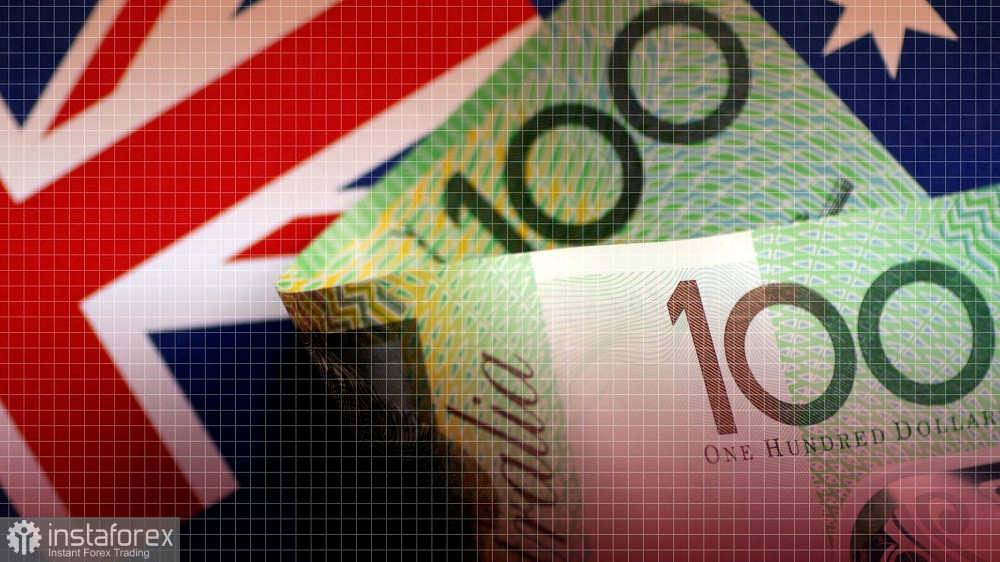AUD/USD showed a downtrend on Monday after three consecutive days of gains last week. In early December, the aussie was betting on the outcome of this year's last Reserve Bank of Australia meeting, which unexpectedly turned out to be on its side. At least that's how the market interpreted the RBA's rhetoric, though in my opinion the central bank sounded (among other things) rather dovish signals, which traders ignored. In any case, the RBA did not become an ally of the aussie: the currency only grew due to the fact that the RBA did not implement the most dovish scenario.
Let me remind you that prior to the December meeting, there were rumors that the central bank would show its willingness to take a break from raising the interest rate. Representatives of the central bank repeatedly voiced relevant hints, but such assumptions were rather hypothetical. At the last meeting of the RBA in 2022, it was quite possible to confirm or deny the relevant rumors.

But this did not happen. RBA Governor Philip Lowe refrained from providing any signals in the context of a possible pause in tightening of monetary policy. At the same time, he did not refute the assumption that the central bank is ready to take a wait-and-see approach. At the same time, the rhetoric of the accompanying statement was rather bland.
In other words, at the end of the December meeting, the RBA has implemented the basic, rather than dovish, scenario. The RBA raised the interest rate by 25 basis points (fully justifying experts' forecast in this regard), and Lowe did not touch on the topic of a possible pause. The rhetoric of the accompanying statement supported the market's basic forecast, according to which the central bank will soon step on the brakes.
According to Lowe, members of the Governing Council will be guided, in particular, by the dynamics of key macroeconomic indicators. By the way, a day after the December meeting, key data on national economic growth were published in Australia. The release was unexpectedly in the red zone: instead of the forecasted 6.2% growth, the economy grew by 5.9% (in annual terms) in the third quarter. On a quarterly basis, the figure was also in the red zone (up 0.6% instead of the forecasted 0.5% growth). The structure of the report suggests that high prices and rising interest rates were limiting consumer spending (another argument for pausing rate hikes: the RBA's monetary policy tightening is cooling consumer demand).
The aussie was down across the market after that report, but then the pair did start to gain momentum amid the weakening U.S. currency. Still, in my opinion, any upward surge should be used to open short positions. If the Federal Reserve supports the greenback this week (or in case it implements the baseline scenario, which does not justify the dovish forecasts), then the aussie would be under a lot of pressure because the fundamental factors play against it.
Firstly, the RBA has repeatedly said throughout November that it is approaching a point where a pause would be possible. Such signals were voiced by Michele Bullock and Lowe, among others.
Secondly, the aforementioned disappointing Australian GDP report may come back to haunt us early next year, when the RBA is due to hold its first meeting of 2023. It is no coincidence that AUD/USD traders reacted so violently to this report, as it is another argument in favor of a wait-and-see position.
Third, the aussie is reacting sharply to the news flow from China, where the situation regarding the coronavirus is getting worse.
Hypothetically there is also a fourth factor. The fact is that key data on the growth of the Australian labor market will be published on Thursday, which may also put pressure on the pair. According to preliminary forecasts the country's unemployment rate will rise to 3.7% (from the current value of 3.4%). The number of employed persons is to increase by 17,000, while the labor force participation rate is to decline to 66.4%. If the report turns out to be in the red (even though the forecasts are quite weak), then the aussie will be under more pressure.
Of course, the aussie is now moving in the wake of the U.S. currency. However, the aussie is unable to run "its own game" given the negative impact of the aforementioned fundamentals. Therefore, price spikes in the pair should still be used as a reason to open short positions. The nearest bearish target is 0.6650, which is the upper limit of the Kumo cloud on the D1, which coincides with the bottom line of the Bollinger Bands indicator.





















